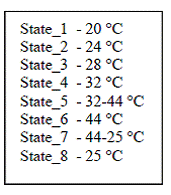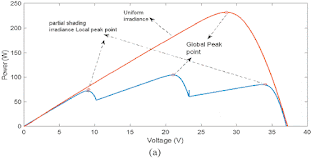ABSTRACT:
This
study presents the reduced sensors based standalone solar photovoltaic (PV)
energised water pumping. The system is configured to reduce both cost and complexity
with simultaneous assurance of optimum power utilisation of PV array. The
proposed system consists of an induction motor-operated water pump, controlled
by modified direct torque control. The PV array is connected to the DC link
through a DC–DC boost converter to provide maximum power point tracking (MPPT)
control and DC-link voltage is maintained by a three-phase voltage-source
inverter. The estimation of motor speed eliminates the use of tacho
generator/encoder and makes the system cheaper and robust. Moreover, an attempt
is made to reduce the number of current sensors and voltage sensors in the
system. The proposed system constitutes only one current sensor and only one voltage
sensor used for MPPT as well as for the phase voltage estimation and for the
phase currents’ reconstruction. Parameters adaptation makes the system stable
and insensitive toward parameters variation. Both simulation and experimental results
on the developed prototype in the laboratory validate the suitability of
proposed system.
Fig. 1 Block diagram
(a) Conventional system, (b) Proposed system, (c) Scheme of the proposed system
Fig. 2 Performance indices
(a) PV array during starting to steady state at 1000 W/m2, (b) IMD
indices at 1000 W/m2
REFERENCES:
[2] Foster, R., Ghassemi, M., Cota,
M.: ‘Solar energy: renewable energy
and the environment’
(CRC Press, Taylor and Francis Group, Inc., Boca Raton, Florida, 2010)
[3] Parvathy, S., Vivek, A.: ‘A
photovoltaic water pumping system with high efficiency and high lifetime’. Int.
Conf. Advancements in Power and Energy (TAP Energy), Kollam, India, 24–26 June
2015, pp. 489–493
[4] Shafiullah, G.M., Amanullah,
M.T., Shawkat Ali, A.B.M.,
et al.: ‘Smart grids: opportunities,
developments and trends’
(Springer, London, UK, 2013)
[5] Sontake, V.C., Kalamkar, V.R.: ‘Solar
photovoltaic water pumping system – a comprehensive review’, Renew. Sustain. Energy Rev., 2016, 59, pp. 1038– 1067






































